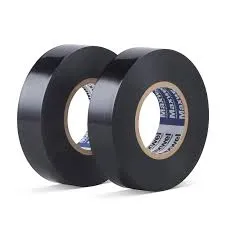Weather Stripping Door Seal Strip Enhancing Energy Efficiency and Comfort
Weather stripping door seal strips are essential components in home insulation, playing a crucial role in maintaining energy efficiency and enhancing indoor comfort. These strips are designed to seal gaps and cracks around doors, preventing unwanted drafts and moisture from entering a home. With rising energy costs and an increasing awareness of environmental impacts, the importance of effective weather stripping cannot be overstated.
Firstly, the primary function of weather stripping is to create a barrier against the elements. During winter, cold air can seep in through gaps around doors, making heating systems work overtime and increasing energy bills. Conversely, in the summer, conditioned air can escape, leading to uncomfortable indoor temperatures and higher cooling costs. By installing weather stripping, homeowners can significantly reduce air leaks, ensuring that their heating and cooling systems operate more efficiently. This not only helps in saving money but also reduces the carbon footprint of the household.
There are various types of weather stripping materials available, each suited for different applications and environments. Some common materials include foam, vinyl, and felt. Foam weather stripping is popular due to its flexibility and ease of installation. Vinyl is more durable and often used for exterior doors, providing a robust barrier against moisture and air leaks. Felt, while less common, is an excellent option for internal doors and is biodegradable, making it an eco-friendly choice. Homeowners can select the most suitable type of weather stripping based on their specific needs and door types.
weather stripping door seal strip

Installation of weather stripping door seal strips is a straightforward process that can be undertaken as a DIY project. Most products come with adhesive backing, allowing for easy application without the need for tools. However, proper measurement of the door frame is crucial to ensure a snug fit. Additionally, regular maintenance checks are recommended as weather stripping can wear out over time, especially in high-traffic areas. Replacing worn-out strips promptly can help maintain insulation effectiveness.
Beyond energy savings, weather stripping contributes to improved indoor air quality. By sealing gaps effectively, it prevents the infiltration of dust, pollen, and other allergens from outside. This is particularly beneficial for individuals with allergies or respiratory conditions, as it creates a more controlled and healthier living environment.
Moreover, weather stripping can also contribute to soundproofing. By minimizing the gaps between the door and its frame, external noise can be significantly reduced. This is especially advantageous for homes located in busy urban areas or near traffic, providing a more serene indoor atmosphere.
In conclusion, weather stripping door seal strips are a vital addition to any home. They enhance energy efficiency, improve indoor air quality, and offer a level of sound insulation. With various materials available and easy installation options, homeowners can take simple yet effective steps towards a more comfortable and sustainable living space. Investing in weather stripping not only pays off in energy savings but also contributes to a healthier and quieter home.
-
XIANGFAN Rubber Tape-Ultimate Solutions for All Your Insulation NeedsNewsJun.24,2025
-
XIANGFAN Rubber Tape-Protection for Industrial and Residential ApplicationsNewsJun.24,2025
-
XIANGFAN Rubber Tape: Superior Safety and Sealing for Demanding EnvironmentsNewsJun.24,2025
-
XIANGFAN Rubber Tape: Reliable Solutions for Every Electrical ChallengeNewsJun.24,2025
-
XIANGFAN Electrical & Industrial Tape: Powering Reliability Across IndustriesNewsJun.24,2025
-
XIANGFAN Electrical & Industrial Tape: Excellence in Every ApplicationNewsJun.24,2025
